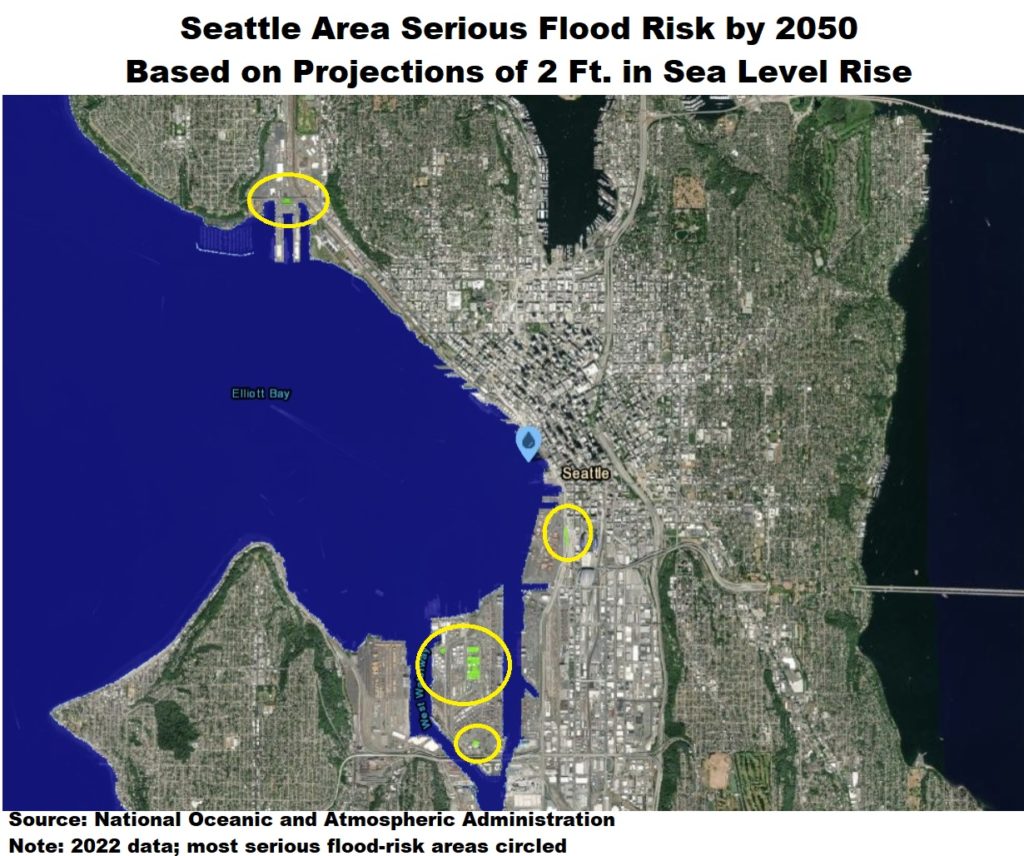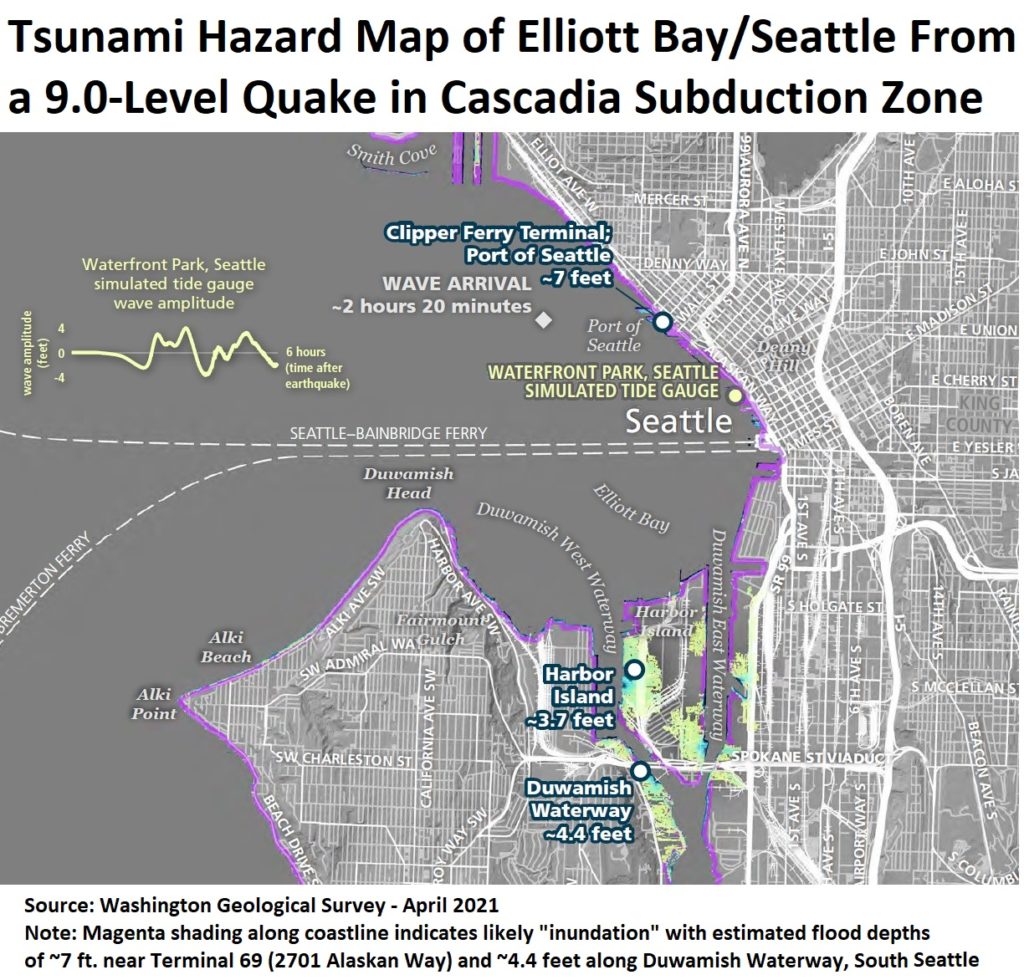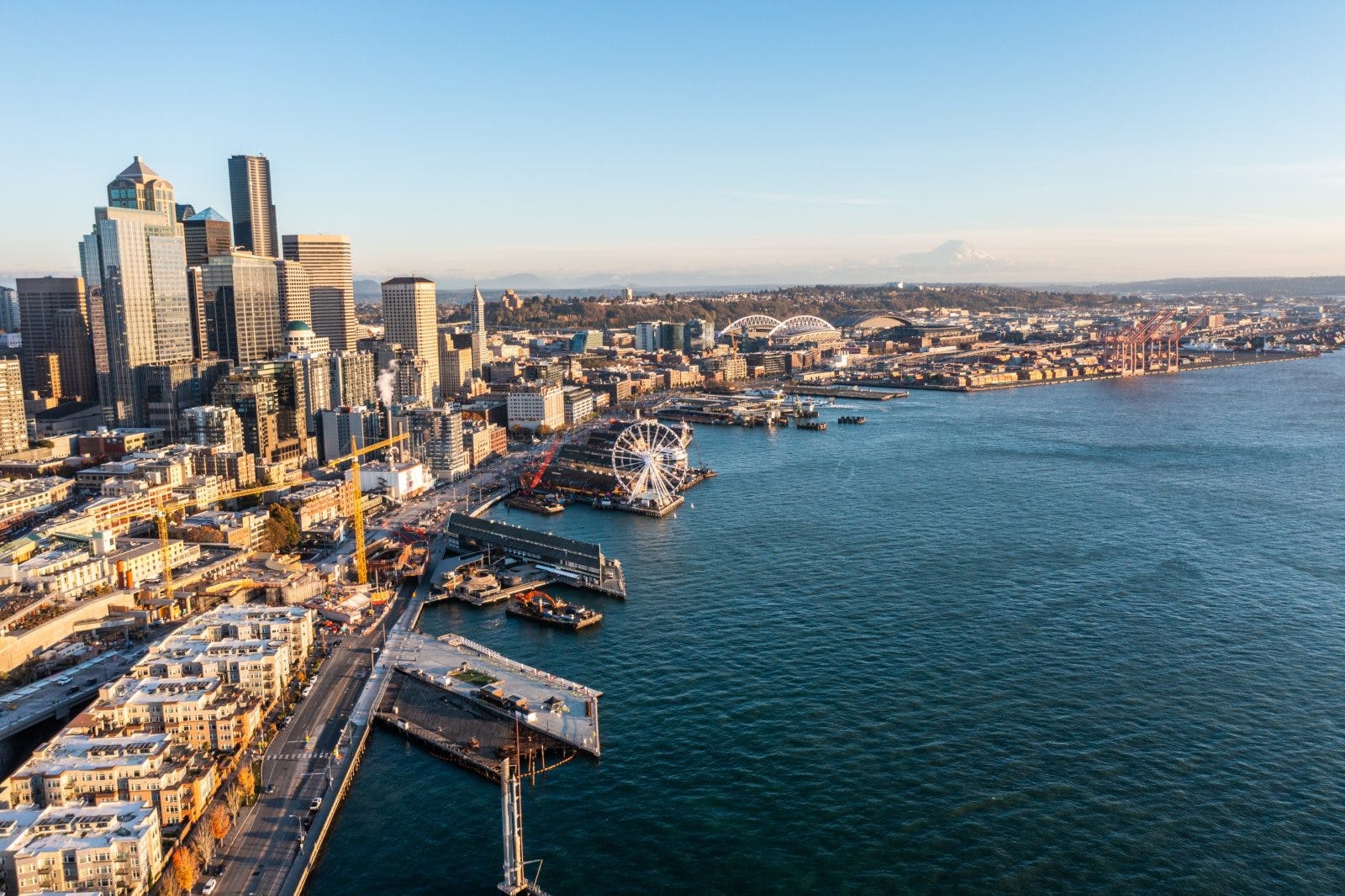Are residences along Puget Sound protected well enough from the effects of high water? The question has been pondered and pored over for decades – and the straight answer is “no, not by a long shot.”
The combination of natural disasters and the effects of climate change is increasing the odds of flooding in low-lying areas of our region. Climate Central – a non-profit, sea-level-rise research group – calculates that nearly $2.2B of Emerald City real estate – from Smith Cove to the Port of Seattle – will be at risk of yearly coastal flooding by 2050.

Our city is most vulnerable to floods from heavy rains, which can overwhelm an aging drainage system and lead to damage to streets, homes and businesses. We saw it in late 2022 in the South Park neighborhood where properties were severely damaged by suddenly rising waters. South Park is along the Duwamish River, which is fed by Elliott Bay, an area that could experience naturally rising sea levels by as much as two feet by 2070 if left unchecked. (An interactive map allows users to assess the potential damage to our area.)
In a survey of 2,000 King County residents in 2022, respondents were asked which aspect of looking for a new home was most important to their household. The top answer (31%) was “climate resilient housing, such as temperature regulation and flood protection.” Clearly, locals are seeing the effects on TV newscasts or from first-hand observations.
Severe weather events have caused more than $1T damage in the last 10 years, according to a national report on climate disasters. The number and cost of one-time weather disasters and long-term climate events is increasing, the report notes.
“Flooding is becoming a bigger issue, particularly in coastal areas, so we need to reconsider where we build and incorporate flood resilience measures in homes that have any chance of flooding,” Alex Wilson says. “Storms are getting more severe, so we also need to practice wind-resistant design.” Wilson is president of the Resilient Design Institute, a Vermont-based nonprofit dedicated to ensuring communities can endure climate change.
As the theory goes, humans can help lower carbon emissions through innovation, renewable energy and other methods to help solve the climate crisis and lessen the risk of flood. But they cannot prevent nature’s potential for delivering a 1-2 punch of an earthquake and tsunami.
We have been warned for many years to expect and prepare for a BIG one at any moment. Less attention, however, has been paid to the risk of flooding caused by a wave of water following that quake. In truth, the damage from a tsunami could be far worse than a series of heavy rains (you know, those “atmospheric rivers” we sometimes receive).

While most estimates put tsunami-related damage from an earthquake of 9.0 magnitude in the 2-7 feet range in our area, some forecasts show the severity being far more widespread. One model from the state’s Department of Natural Resources believes Seattle could be slammed with a 20 ft. wall of water from a quake of 7.5, reaching Elliott Bay as soon as three minutes after the jolt.
Forecast models from tsunami-damaging floods show the impact would be widespread, covering San Juan, Whatcom, Skagit, Island, Snohomish, Kitsap and Pierce counties. The highest water levels could exceed a foot in the communities of Quilcene and Irondale, Jefferson County, and in Eldon, Mason County, according to forecast maps based on a 9.0 quake. The model in action can be frightening to watch:
NEW: A simulation of the impact of a ~7.5-magnitude earthquake on the Seattle Fault.
— Washington State Dept. of Natural Resources (@waDNR) July 7, 2022
Tsunami waves could be as high as 42 feet at the Seattle Great Wheel and will reach inland as far as Lumen Field and T-Mobile Park. pic.twitter.com/y44PWHXQtv
Tsunamis have hit Western Washington in the past and they will happen again. The last Cascadia earthquake to cause a tsunami was in 1700 and it left death and destruction to people in Japan. The most devastating tsunami to hit the West coast came in 1964 when a 9.2 quake hit Anchorage; 122 died from the sudden waves, including 17 on the shores of Oregon and California.
To be sure, Seattle and surrounding areas have taken steps to mitigate the risk of flooding, such as building sea walls and upgrading drainage systems – but we don’t know for certain if it will be enough to avoid more damage to our communities. Homeowners should take steps to prepare for flooding, including waterproofing the home’s walls and purchasing flood insurance.
As Mother Nature delivers at least one heavy soaking to us each spring and fall, we know more properties are susceptible to flooding and storm surges. About 4% of this nation’s homes are insured against floods and yet the data shows that far more are impacted every year – and homeowner’s policies do not typically cover floods from natural disasters.
The median annual insurance cost to U.S. homeowners in a high-risk flood area is $797. For renters in high-risk areas, it’s $298 for belongings only.
Are you the type to say, “It won’t happen to me.”? Every state has been seriously impacted by a significant flood in the past decade, so it can happen to us. You can run to safety from the flood, but you can’t hide from the costly cleanup when it hits home. Talk to your insurer for more information.
====================
RESOURCES
National Oceanic and Atmospheric Administration – Flood Risk to Seattle Area
Federal Emergency Management Agency (FEMA) – Flood Preparedness
Washington State Dept. of Natural Resources – Tsunami Preparedness
Washington State Dept. of Natural Resources – Earthquake and Landslide Awareness




